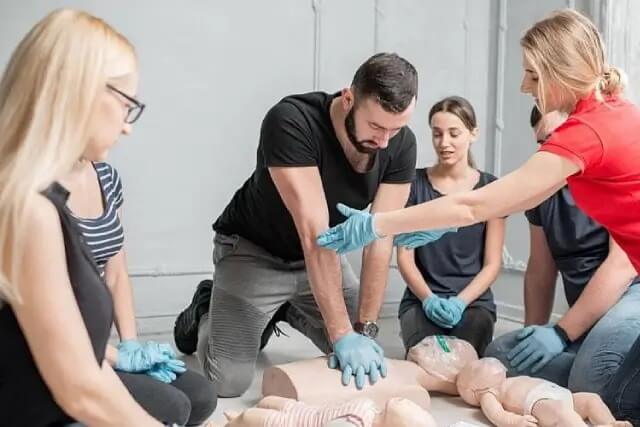Are you in charge of maintaining health and safety standards across a high-risk environment? Whether you work in the manufacturing and construction industries, or a more specialist field, the safety of your team is your top priority: so, explore how to protect your employees and handle emergencies with first aid training courses for high-risk environments.
Identifying high-risk environments
In areas, workplaces, and situations that have been identified as high-risk, an immediate response will often mean the difference between life and death. This term does not just refer to the likelihood of regular emergencies, but can also refer to the severity of any accidents and their widespread impact. So, whilst the main focus of any business is always on preventing any emergencies, it is also crucial that there are people on-site at all times who are equipped to provide immediate aid to the injured party.
These essential skills and techniques, delivered through specialist first aid training courses, equip the designated first aiders in any high-risk workplace to stabilise emergency situations and minimise the impact of any injuries until professional help arrives. So, before we explore the training itself, let’s identify the high-risk environments that require the onsite presence of trained first aiders:
- Construction Sites: High risk of falls, machinery accidents, and heavy object injuries.
- Manufacturing Plants: Exposure to hazardous materials, machinery accidents, and chemical spills.
- Chemical Sites: Risk of chemical burns, toxic exposure, and explosions.
- Heavy Machinery Plants: High risk of equipment malfunctions, operator errors, and crushing injuries.
First aid training courses
Once you have identified the different types of hazards that your team is likely to face on a daily basis, it’s time to explore the range of first aid training courses available to you, including:
1. First aid at work
In these dangerous workplaces and areas, an immediate response is needed to maintain a stable and safe area and prevent more injuries or panic after an emergency. This comprehensive training framework will equip employees with the skills needed to respond to an emergency and minimise the impact of injuries until an ambulance arrives by covering the 1-day Emergency First Aid at Work curriculum and additional topics, including:
- Secondary survey
- Injuries to bones, joints and muscles (including spinal injuries)
- Suspected head and spinal injuries
- Chest injuries
- Burns and scalds
- Eye injuries
- Sudden poisoning
- Anaphylaxis
- Major illnesses (heart attack, stroke, epilepsy, asthma & diabetes)
- Serious bleeding
2.Specialist courses
Standard training can sometimes fall short when equipping employees with the skills required for these unique and often life-threatening situations. Whilst general courses do not often cover specific hazards such as chemical burns and electrical injuries, specialist courses are designed to bridge this learning gap and address the particular risks associated with these specific industries.
So, from understanding the appropriate decontamination procedures in the event of a chemical injury, to practising the techniques required to deal with crushing injuries, amputations, and severe bleeding, these courses teach first aiders to remain calm and authoritative during these stressful and shocking situations. As the responsible person in charge of emergency response and safety provisions across your workplace, it is important that you assess the specific risks posed by your site and source the right courses to safely handle the most dangerous and likely emergencies.
3.Ongoing training and refreshers
Emergency response skills, just like all skills, can become confused, less effective, or even forgotten over time. Whilst some skills can come back to us in the moment, emergency situations are likely to make anyone freeze and panic unless their skills have been maintained with regular refresher sessions – particularly in dangerous and hazardous workplaces.
Refresher courses, ideally conducted annually, help to solidify understanding and help the participants to remain confident in their skills and capabilities. No matter how well they understood the topics during the initial training, there is always room for improvement, and these evaluations will identify and address any knowledge gaps whilst also improving the participants ability to remain calm and respond without panic. So, make sure that you include these important courses in your safety protocols and keep your first responders prepared with the skills that they need to act effectively in any emergency situation.
UK-wide courses
A team of well-prepared, fully-qualified first responders is your business’s first line of response when it comes to managing hazards and saving lives when seconds count. So, demonstrate your commitment to maintaining a safer and fully compliant workplace with First Response First Aid – a nationwide provider of first aid courses.










